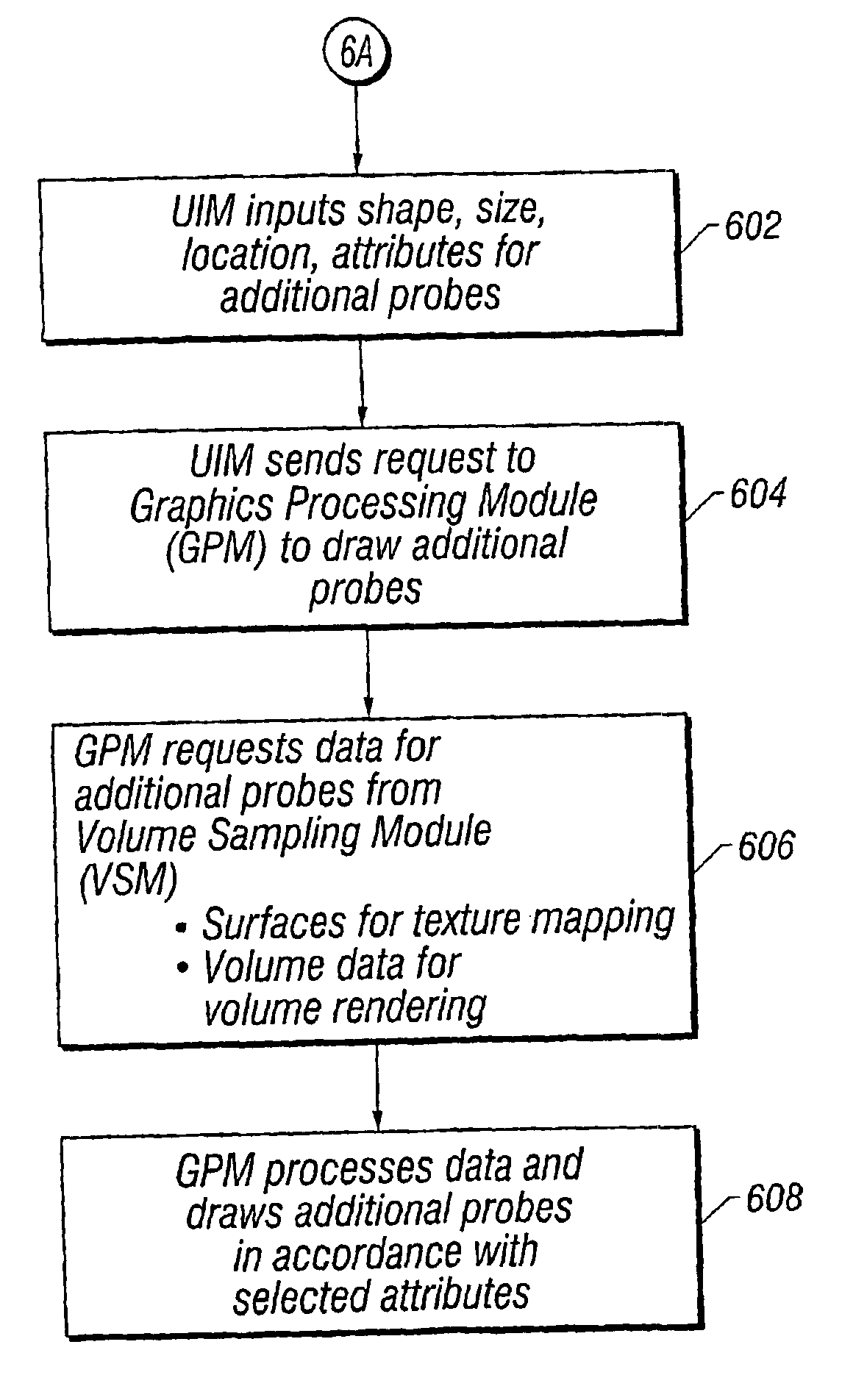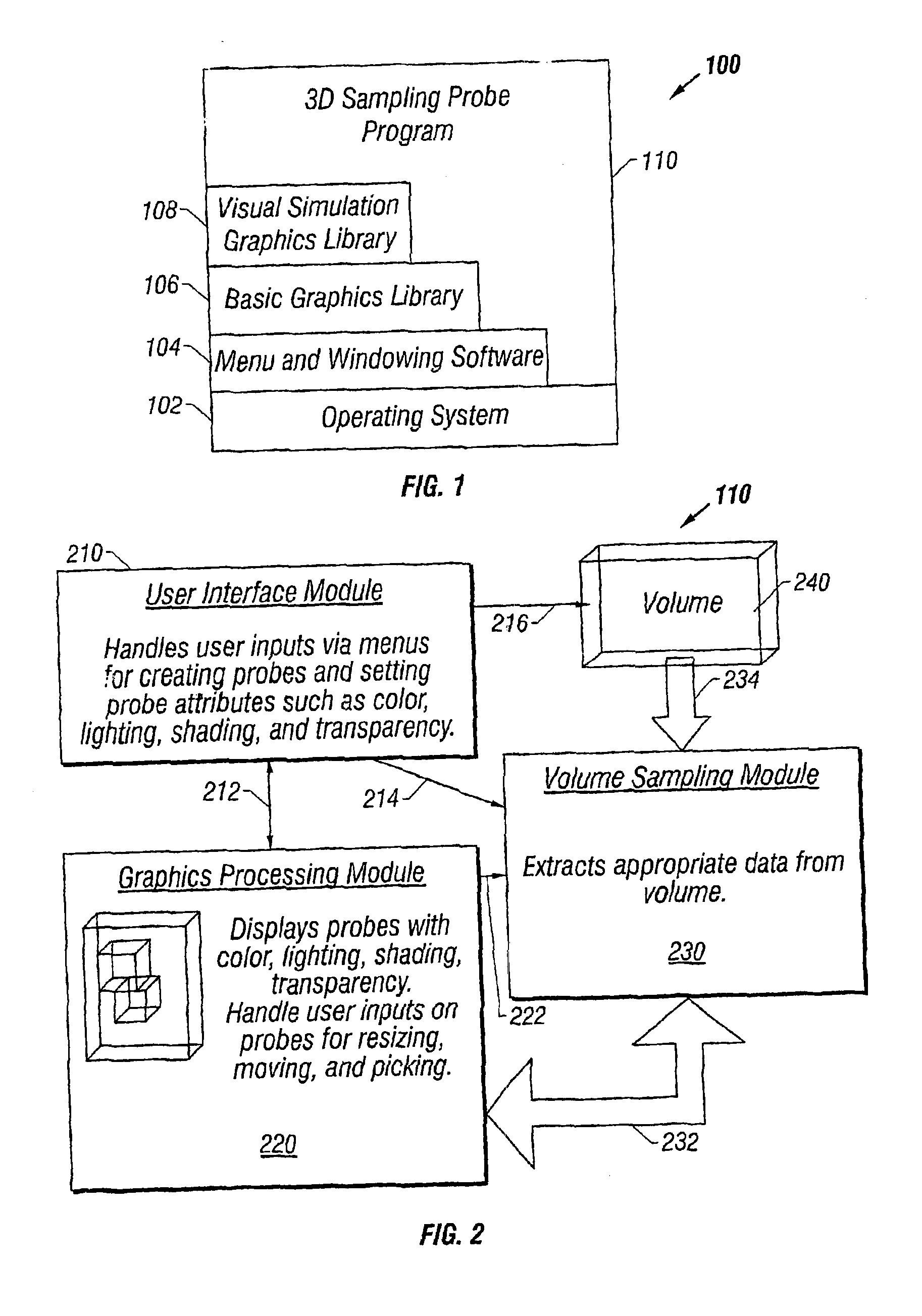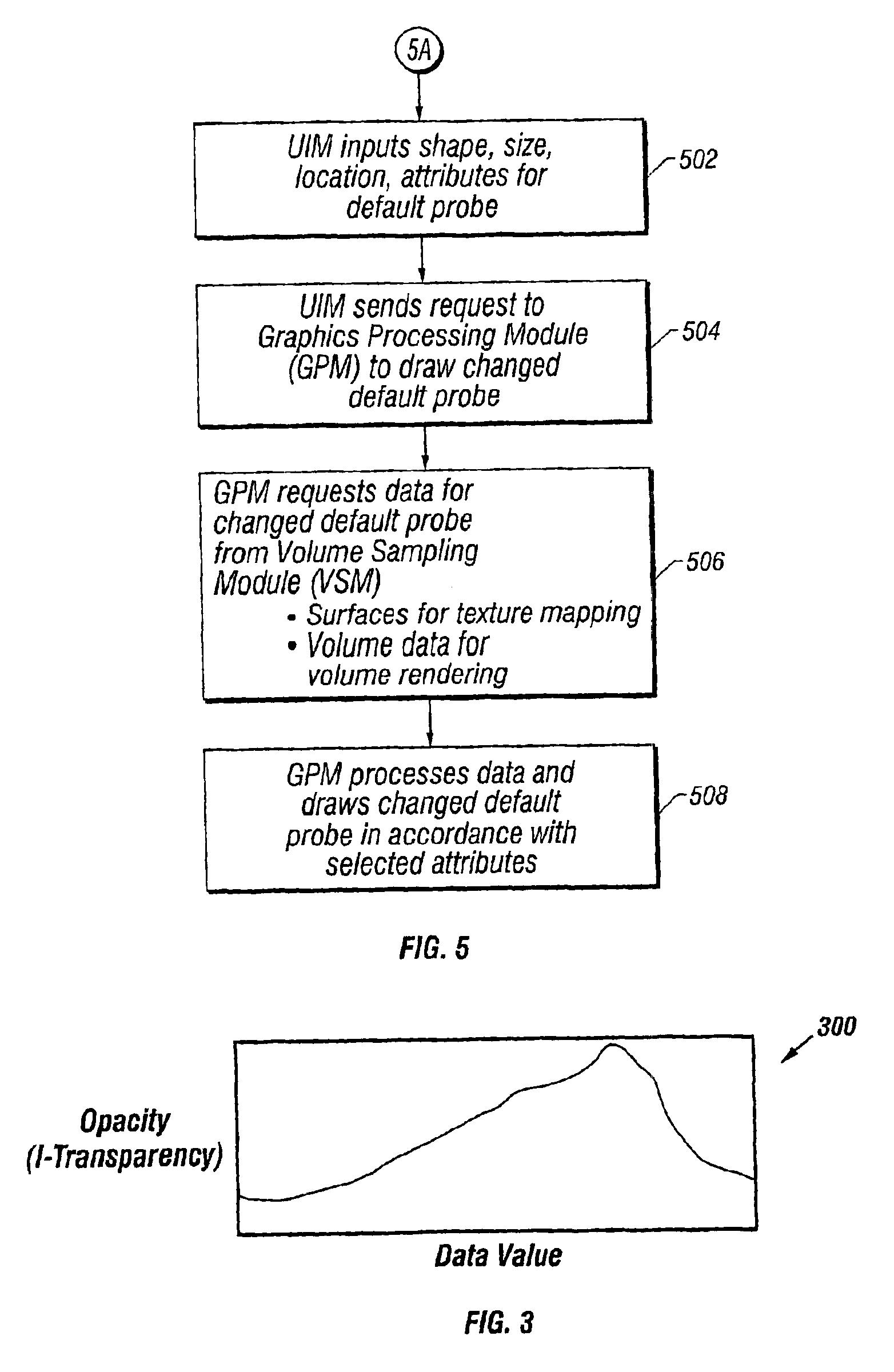System and method for analyzing and imaging three-dimensional volume data sets
a volume data and volume data technology, applied in the field of three-dimensional volume data sets, can solve the problems of affecting the user's ability to accurately visualize and interpret the features inherent in the 3d volume data set, slow traditional slice and composite technique, and cluttered user field, so as to reduce the cycle time of 3d seismic projects, quickly and accurately identify drilling sites, and interpret and identify quickly and accurately
- Summary
- Abstract
- Description
- Claims
- Application Information
AI Technical Summary
Benefits of technology
Problems solved by technology
Method used
Image
Examples
Embodiment Construction
Overview
[0052]The present invention is directed to a system and method for analyzing and imaging three-dimensional (“3D”) volume data sets using a 3D sampling probe. 3D volume data sets comprise “voxels” or volume elements. Each voxel is a sample or point within a volume. Each voxel can be expressed in the form (x, y, z, datavalue) where “x, y, z” identifies the 3D location of the point within the volume, and “datavalue” is the value of some measured or calculated attribute or physical parameter at the specified point within the volume. For example, a 3D volume data set suitable for use with the present invention is 3D seismic data. Each voxel in a 3D seismic data can be expressed as (x, y, z, amplitude), with amplitude corresponding to the amplitude of reflected sound waves at the specified (x, y, z) location.
[0053]Any form of information that can be expressed in the voxel form (x, y, z, datavalue) is suitable for use with the present invention. In addition to seismic data, example...
PUM
 Login to View More
Login to View More Abstract
Description
Claims
Application Information
 Login to View More
Login to View More - R&D
- Intellectual Property
- Life Sciences
- Materials
- Tech Scout
- Unparalleled Data Quality
- Higher Quality Content
- 60% Fewer Hallucinations
Browse by: Latest US Patents, China's latest patents, Technical Efficacy Thesaurus, Application Domain, Technology Topic, Popular Technical Reports.
© 2025 PatSnap. All rights reserved.Legal|Privacy policy|Modern Slavery Act Transparency Statement|Sitemap|About US| Contact US: help@patsnap.com



